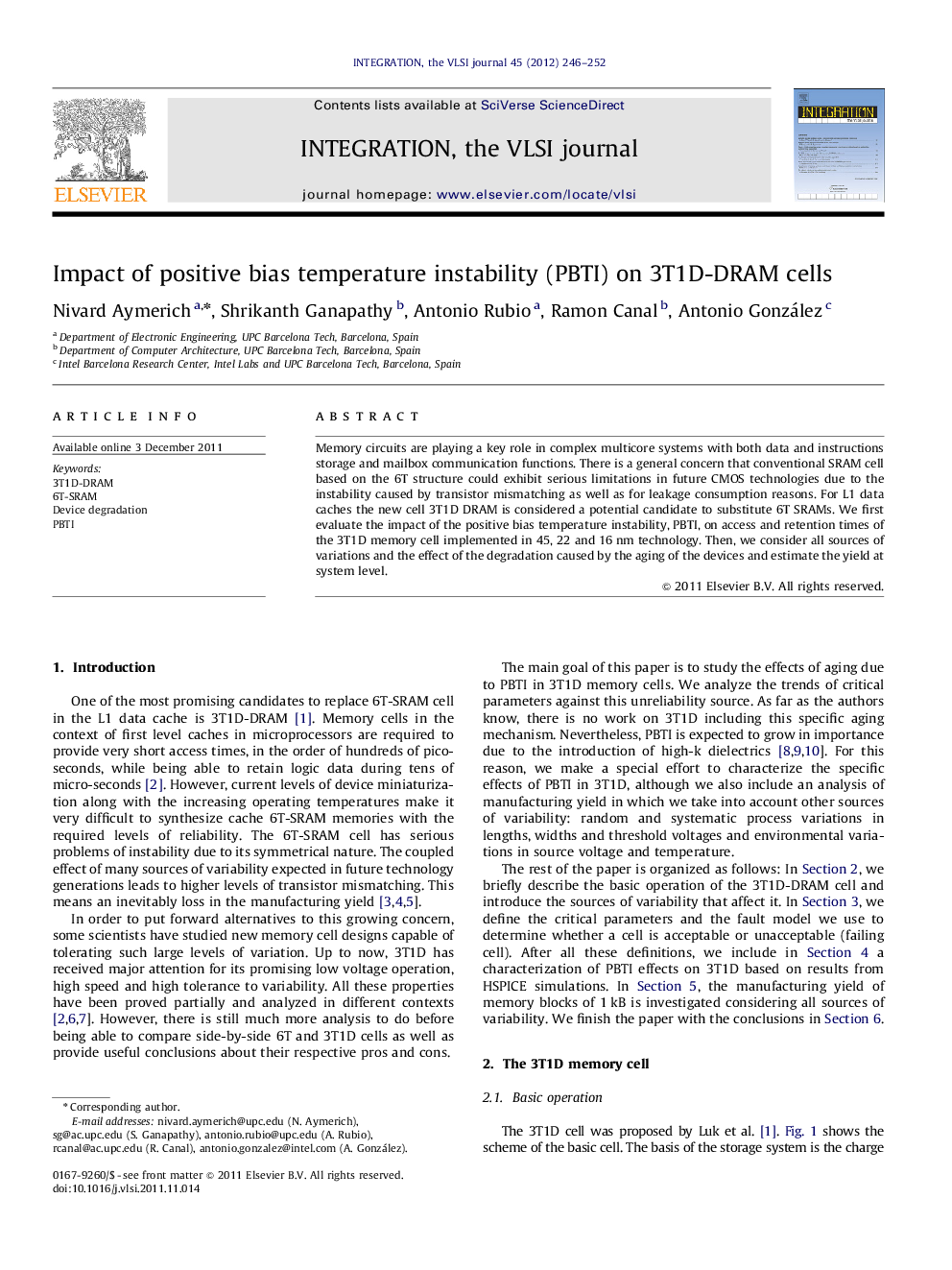| Article ID | Journal | Published Year | Pages | File Type |
|---|---|---|---|---|
| 539905 | Integration, the VLSI Journal | 2012 | 7 Pages |
Memory circuits are playing a key role in complex multicore systems with both data and instructions storage and mailbox communication functions. There is a general concern that conventional SRAM cell based on the 6T structure could exhibit serious limitations in future CMOS technologies due to the instability caused by transistor mismatching as well as for leakage consumption reasons. For L1 data caches the new cell 3T1D DRAM is considered a potential candidate to substitute 6T SRAMs. We first evaluate the impact of the positive bias temperature instability, PBTI, on access and retention times of the 3T1D memory cell implemented in 45, 22 and 16 nm technology. Then, we consider all sources of variations and the effect of the degradation caused by the aging of the devices and estimate the yield at system level.
